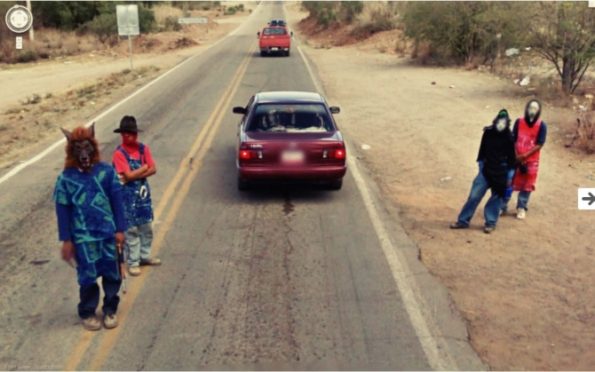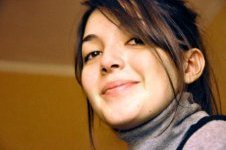Search
To search for an exact match, type the word or phrase you want in quotation marks.
A*DESK has been offering since 2002 contents about criticism and contemporary art. A*DESK has become consolidated thanks to all those who have believed in the project, all those who have followed us, debating, participating and collaborating. Many people have collaborated with A*DESK, and continue to do so. Their efforts, knowledge and belief in the project are what make it grow internationally. At A*DESK we have also generated work for over one hundred professionals in culture, from small collaborations with reviews and classes, to more prolonged and intense collaborations.
At A*DESK we believe in the need for free and universal access to culture and knowledge. We want to carry on being independent, remaining open to more ideas and opinions. If you believe in A*DESK, we need your backing to be able to continue. You can now participate in the project by supporting it. You can choose how much you want to contribute to the project.
You can decide how much you want to bring to the project.

When was the last time that anyone in your city stopped you to ask directions? Google Maps and Google Street View, a.k.a. GSV, have almost completely eradicated the need for such natural behaviour. Now our directions are given by the omnipresent Google and there is no longer any need for the slightest human interaction to find where we want to go, as lost as we may be. GSV has taken this convenience to a new dimension with the opportunity to see streets in practically any location on earth. Thanks to this travelling almost anywhere in the world at the click of a mouse has become a global pastime. But the true interest lies in the fact that this world image bank, compiled after years of work by the company vehicle, has also left an extensive archive of moments from our daily lives: some of them mundane, others surprising.
Many artists and creative studios have been able to see that what this tool, indispensable though it may be, hides is a true lack of aesthetic intention. But if real life can provide the inspiration for artistic creation, in other words life without additions or manipulations, then Google Street View is the biggest source of artistic inspiration ever to be created. On its route through the thousand million places it has recorded, the GSV camera has captured moments that make coincidental, surreal, tragic and even funny situations tangible.
The first example combines the power of GSV and the human desire to see the world without moving off the sofa. The creative agency Teehan+Lax has made the tedious experience of “travelling” the world click by click into a digital road trip. The Google Street View Hyperlapse project combines time-lapse techniques with film offcuts, to create the sensation of travelling along the road in a car.
All you have to do is select points A and B and the system takes care of creating the itinerary. Although watching the videos doesn’t make much sense other than as entertainment, the project has shown that the image bank created by Google could be useful for creating time-lapse works quickly without having to move a whole team to the chosen location.
The next example of Googleart is probably the most well known. It is the The Nine Eyes of Google Street View by Jon Rafman, a project that brings together the crudest, most surreal and surprising images from GSV. Here reality is displayed with no sense of shame, showing house fires, people tripping up, being arrested, brandishing weapons – all the places art doesn’t usually go to for its artistic material.
But for Rafman the beauty and aesthetic interest lie precisely in the crude reality of the image. We have to be honest and say that after spending a while browsing the images on the project website, the question has to be whether ‘Nine Eyes’ is really art or simply a morbid display of some rather bizarre situations.
Another example of the more sinister side of GSV are the series by artist Michael Wolf and specifically the series A series of unfortunate events. Here, GSV becomes Wolf’s primary photographic material, which he collects, cuts and frames in scenes of catastrophes about to happen.

Halfway between a morbid interest in what has not yet happened and an attraction to tragedy, Wolf’s series were recognised with an honorary mention in the World Press Photo Awards in the Contemporary Issues category. This caused controversy about the work, which many qualified as lacking any artistic connotation and much less any aspect of photojournalism.
These artistic projects are the result of changes in modern society’s leisure activities as result of Internet surfing. Apart from the obvious reflections on voyeurism and a morbid fascination for tragedy, we can perceive an attempt to find a sense that goes beyond the purely practical. If we scratch the surface, under their apparently conceptual simplicity these uses of GSV are a reflection of the undeniable presence of these tools in our lives.

Verónica Escobar Monsalve is a restless soul, with a digital nature and an analogue heart. Her investigations centre on art and culture that mix the digital world with pre-digital thought. Art and culture that is capable of reflecting the complexity of today’s world. She believes in the vital importance of a critical spirit and how this can be applied to any facet in life, however difficult it may be.
"A desk is a dangerous place from which to watch the world" (John Le Carré)